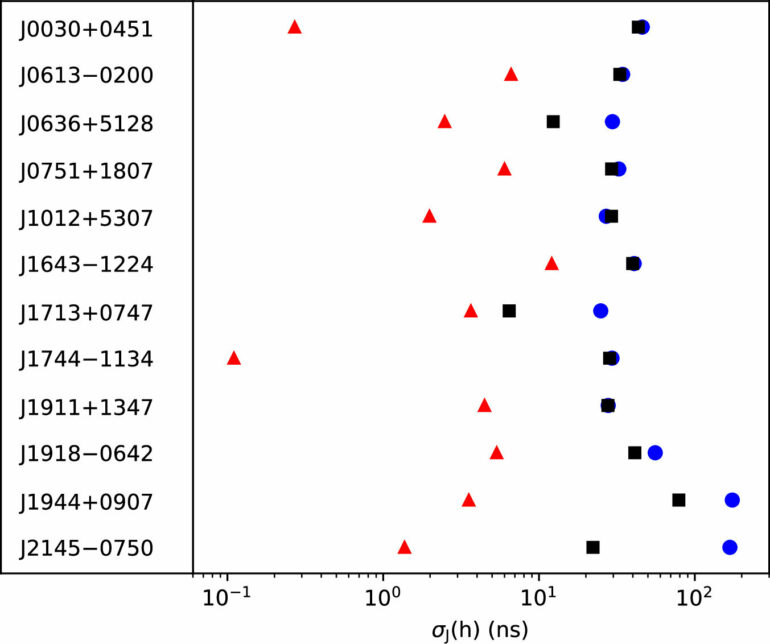Pulsar timing enables the most stringent tests of fundamental physics. By monitoring the pulse times of arrival (ToAs) of an ensemble of stable millisecond pulsars (MSPs), known as a pulsar timing array (PTA), it is possible to detect nanohertz gravitational waves (GWs). The success of GW detection with PTAs requires the highest possible timing precision.
The timing precision of a pulsar is limited by many noise contributions, including those introduced by the pulsar itself, the interstellar medium along the line of sight, and the measurement process. On short timescales, the noise is typically dominated by white noise, which includes radiometer noise, jitter noise, and scintillation noise.
In a study published in The Astrophysical Journal, Wang Shuangqiang at the Xinjiang Astronomical Observatory (XAO) of the Chinese Academy of Sciences and collaborators used the data obtained from the Five-hundred-meter Aperture Spherical Radio Telescope (FAST) to carry out a study of white noise in MSPs.
The researchers presented measurements of the radiometer noise, jitter noise, and scintillation noise of 12 MSPs that are part of the International Pulsar Timing Array sample.
They found that different pulsars show different levels of jitter noise. The contribution of scintillation noise is likely negligible, and jitter noise is larger than radiometer noise, making it the dominant component in white noise. Therefore, mitigating the jitter noise is important for the detection of GWs.
Furthermore, the researchers performed a new method, namely matrix template matching, which generates ToAs by using all four Stokes parameters rather than only Stokes I, to mitigate the jitter noise.
They found that the jitter noise can be reduced in the range of 6.7% to 39.6% by using this method. Therefore, matrix template matching is a valuable method to improve the timing precision in pulsars.
In the future, this method will be applied to a large dataset of MSPs with FAST.
More information:
S. Q. Wang et al, Pulse Jitter and Single-pulse Variability in Millisecond Pulsars, The Astrophysical Journal (2024). DOI: 10.3847/1538-4357/ad217b
Provided by
Chinese Academy of Sciences
Citation:
Improving timing precision of millisecond pulsars using polarization (2024, May 8)



